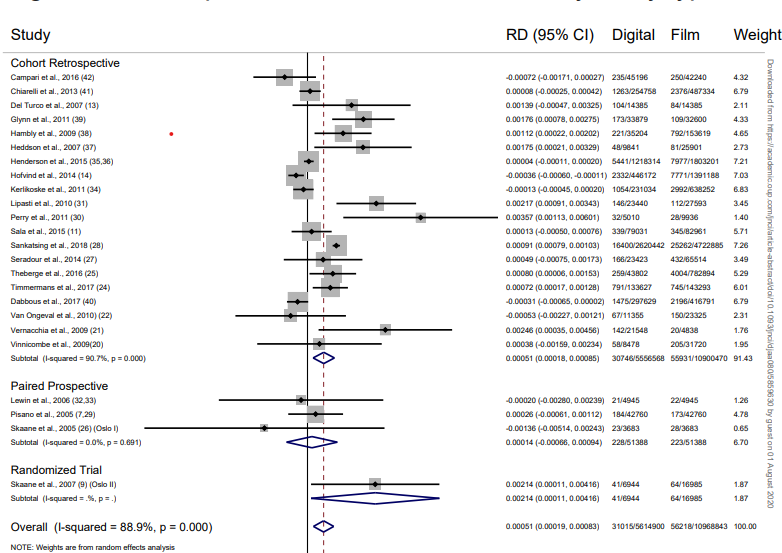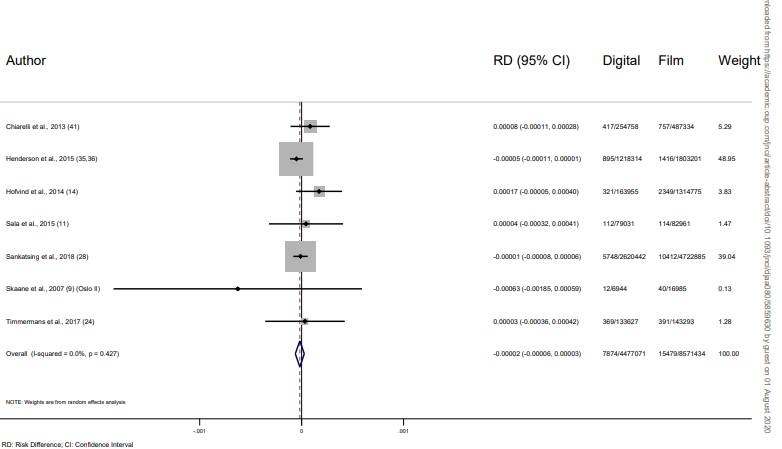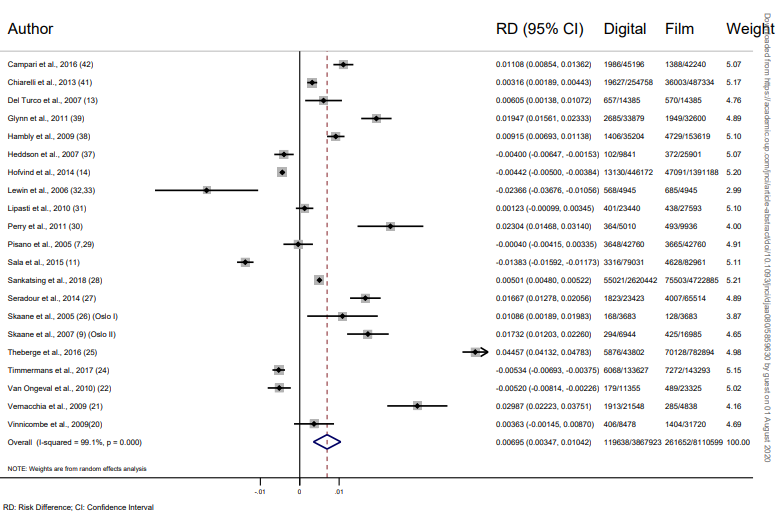ECR Epidemiologist extraordinaire @RachelFarber3 recently published her first PhD paper on the Impact of Full-Field Digital Mammography versus Film-Screen Mammography in Population Screening: @JNCI_Now http://ow.ly/zc5d50AmPaC ">https://ow.ly/zc5d50AmP... @wiserhealthcare @GemmaJacklyn @processofimport 1/8
The systematic review and meta-analysis included 24 studies across 12 countries with 16,583,743 screening examinations (10,968,843 film and 5,614,900 digital) 2/8
The analysis found a modest increase in the number of cancers detected with the new screening technology (0.51 more cancers per 1,000 screens). In situ cancers (DCIS) were relatively more likely to be detected with the new technology than invasive cancers. 3/8
However, there was no change in the number of interval cancers. These are cancers that are diagnosed outside of the screening program - these cancers are often clinically detected, and tend to have a higher risk of adverse outcomes. 4/8
There was also an increase in the number of women recalled after an abnormal mammography result, most of which were false positives (the women were found to not have cancer). 5/8
Summary: The transition to digital mammography undoubtedly led to efficiency gains in delivering screening. But the modest increase in screen-detected cancers (some of which are likely overdiagnosed) was accompanied by more false alarms and no reduction in interval cancers. 6/8
This study reinforces the need to carefully evaluate potential benefits and harms of new technologies for population screening programs, such as tomosynthesis for breast cancer screening. 7/8
@RachelFarber3 recently discussed some of these findings on @RadioNational Health Report with @normanswan : https://www.abc.net.au/radionational/programs/healthreport/coronavirus-/12448520">https://www.abc.net.au/radionati... 8/8

 Read on Twitter
Read on Twitter




